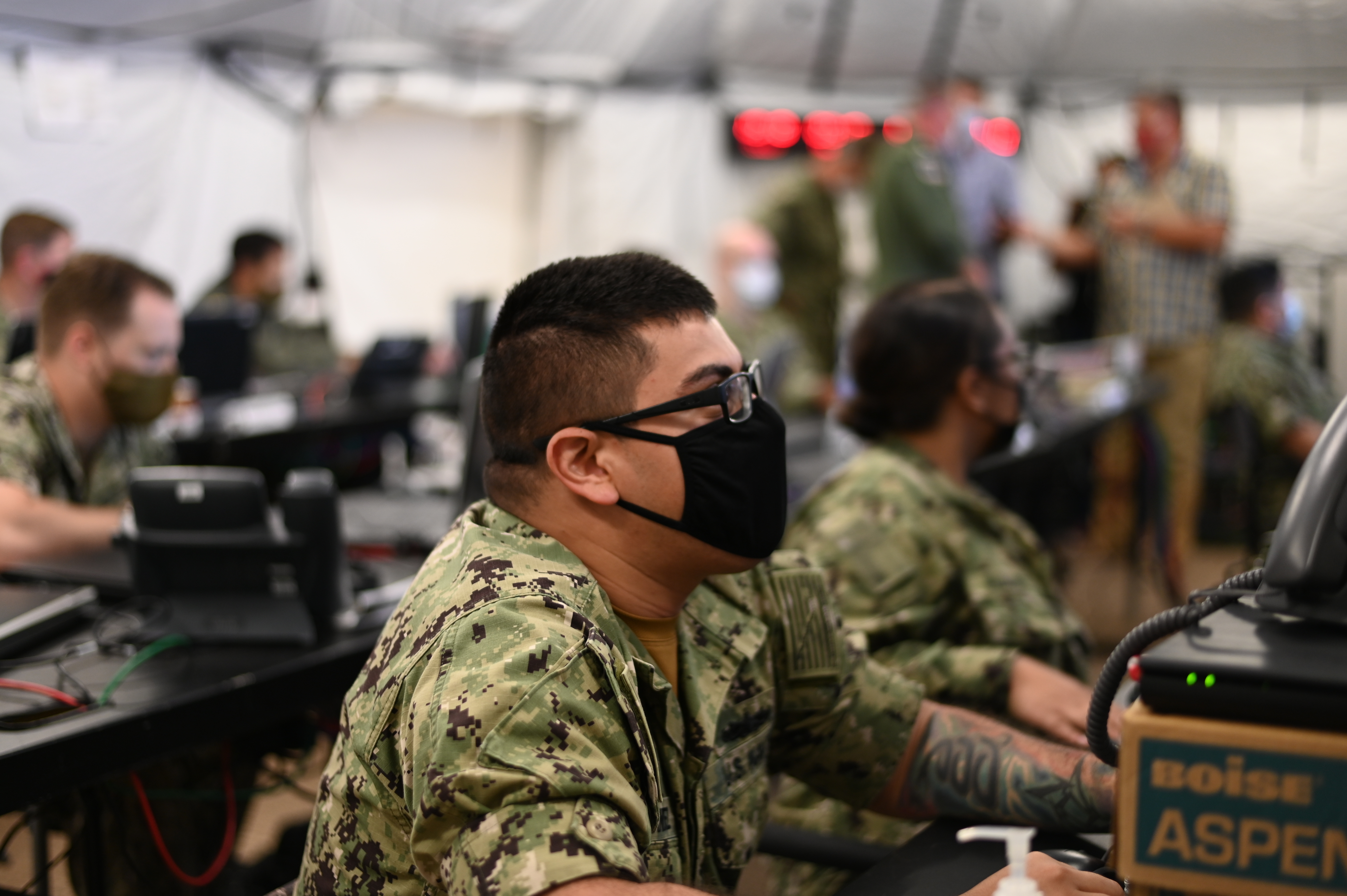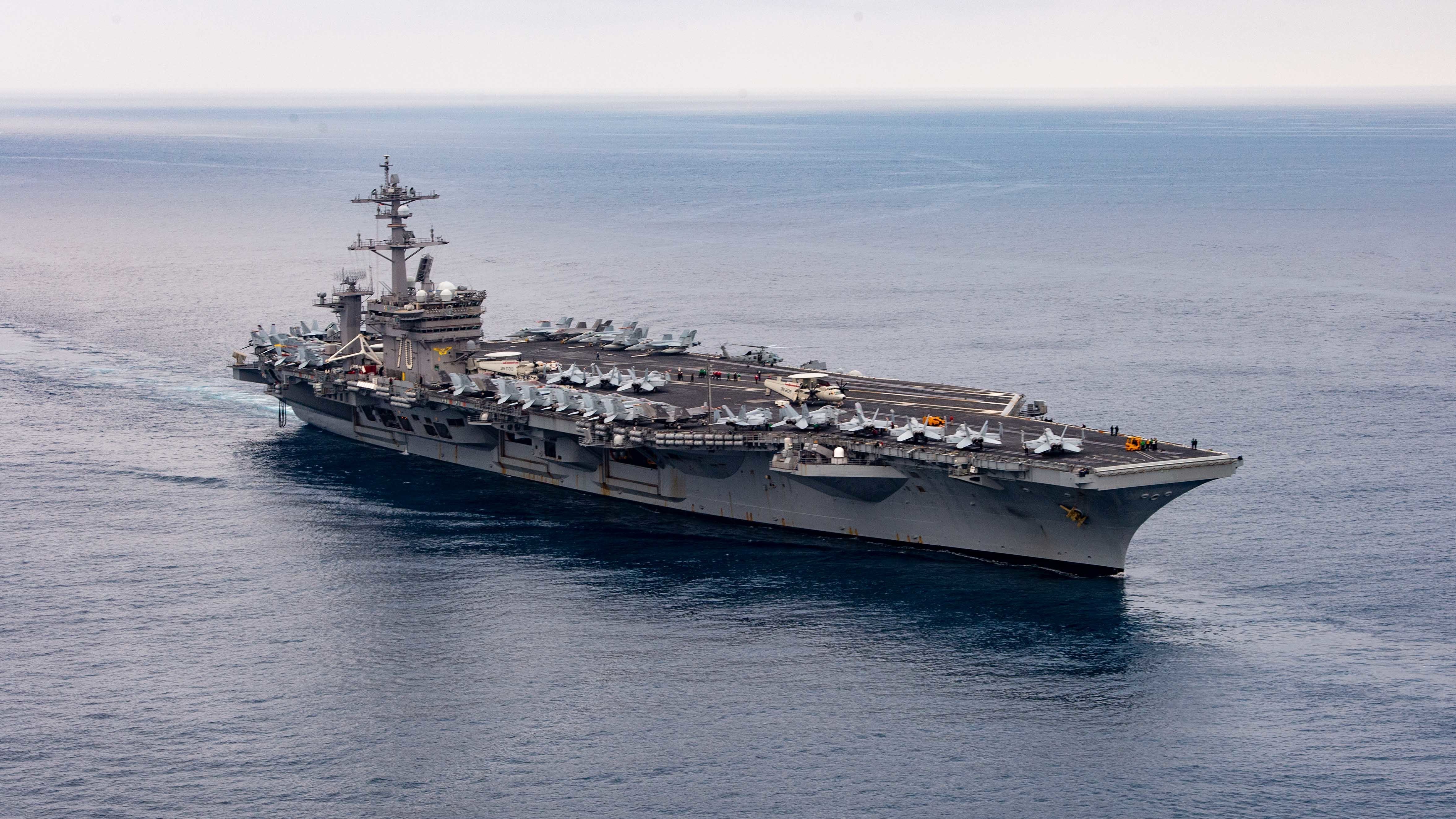
San Diego-based U.S. 3rd Fleet relocated its command-and-control hub to Hawaii to support the Navy’s Large Scale Exercise 2021 and join an integrated exercise that’s combining live ships, including the aircraft carrier USS Carl Vinson (CVN-70), and new technologies with simulated forces designed to synchronize the joint force.
Third Fleet staff set up shop in an expeditionary maritime operations center at Joint Base Pearl Harbor-Hickam that was raised over three days with help from Joint Mobile Ashore Support Team Pacific, officials said. The EMOC – a series of large, air-conditioned tents housing command-and-control systems – is serving as the fleet’s forward-based headquarters during LSE 21, which began Aug. 3 and runs through Aug. 16.
“The power of 3rd Fleet is our ability to integrate warfighters, command battlespace, fight and win,” Fleet Commander Vice Adm. Steve Koehler said in a statement. “We go where the fight takes us, and we maintain the warfighting advantage through our ability to solve problems and innovate in the middle of that fight. We can do that from a tent ashore, a ship in the Pacific or anywhere else there is a need.”
LSE 21 is the Chief of Naval Operations-directed exercise that also includes U.S. Fleet Forces, U.S. Pacific Fleet, Naval Forces Europe, Marine Forces Pacific, Marine Forces Atlantic and Marine Forces Europe, with participating units spread across 17 time zones.
Naval forces also are participating in the Department of Defense-directed Global LSE 2021, which is led by U.S. Indo-Pacific Command and runs from Aug. 2 through 27. This year’s global exercise involves only U.S. forces, but “future training will evolve into a triennial exercise that will include U.S. allies and partners,” Indo-Pacific officials said in a statement.

Vinson, which left its Naval Air Station North Island, Calif., on Aug. 2 for a scheduled deployment to the western Pacific, reached Hawaii on Sunday and joined the exercise. Carrier Air Wing 2 aboard Vinson includes the Navy’s newest advanced F-35C Lightning II Joint Strike Fighter and the carrier onboard aircraft CMV-22 Osprey, putting some of the latest airborne sensors and weapons systems into the mix.
“LSE 2021 allows us to validate newly developed technologies, techniques and procedures that allow the Navy and Marine Corps to effectively fight, win, and deter potential adversaries,” Capt. Tommy Locke, the wing commander, said in a U.S. Pacific Fleet release. “Our efforts to synchronize the Navy and Marine Corps’ surface and air units across all domains distribute lethality and survivability across the force.”
“LSE at its core is leveraging integrated fighting power of multiple naval forces to share sensors, weapons and platforms across all domains” said Rear Adm. Dan Martin, the Carrier Strike Group 1 commander aboard Vinson. “Contemporary naval doctrine demands a shift of focus from the individual carrier strike group to a fleet-centric approach. During LSE 2021, CSG-1 assets will participate in live and virtual events designed to combine the art of science and naval warfare into a joint-force training platform.”
The Vinson Carrier Strike Group – the carrier along with Ticonderoga-class guided-missile cruiser USS Lake Champlain (CG-57) and Arleigh Burke-class guided-missile destroyers USS Chafee (DDG-90) and USS Stockdale (DDG-106) – kicked off its part in the exercise with a coordinated long-range maritime strike exercise, according to Indo-Pacific Command.
Capt. Gilbert Clark, who commands Destroyer Squadron 1 with the strike group, said in a news release that LSE “is a true demonstration of Navy and Marine Corps readiness to fight and our flexibility to control and project sea power. During this time of strategic competition, we routinely deploy credible and capable Naval forces ready to protect and defend American interests.”





